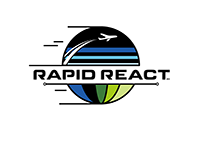Ecosyste.ms: Awesome
An open API service indexing awesome lists of open source software.
https://github.com/pigmice2733/frc-2022
Pigmice robot code for FRC 2022 Rapid React
https://github.com/pigmice2733/frc-2022
frc java pigmice rapid-react robotics
Last synced: 3 days ago
JSON representation
Pigmice robot code for FRC 2022 Rapid React
- Host: GitHub
- URL: https://github.com/pigmice2733/frc-2022
- Owner: Pigmice2733
- License: other
- Created: 2022-01-19T00:59:33.000Z (almost 3 years ago)
- Default Branch: main
- Last Pushed: 2022-05-04T01:04:25.000Z (over 2 years ago)
- Last Synced: 2023-03-02T01:55:39.493Z (over 1 year ago)
- Topics: frc, java, pigmice, rapid-react, robotics
- Language: Java
- Homepage:
- Size: 1.42 MB
- Stars: 3
- Watchers: 4
- Forks: 0
- Open Issues: 5
-
Metadata Files:
- Readme: README.md
Awesome Lists containing this project
README

frc-2022
Robot code for FRC 2022 Rapid React

## Prerequisites
Make sure you have [Git](https://git-scm.com/downloads) installed, as well as some form of code editor. [Visual Studio Code](https://code.visualstudio.com/) is recommended, as well as the [Microsoft Extension Pack for Java](https://marketplace.visualstudio.com/items?itemName=vscjava.vscode-java-pack).
## Installation
1. Open a terminal and [`cd`](https://docs.microsoft.com/en-us/windows-server/administration/windows-commands/cd) into the directory you want to clone the repository into.
2. Install [Git](https://git-scm.com/downloads) if you haven't already.
3. Run the command `git clone --recurse-submodules https://github.com/Pigmice2733/frc-2022.git`. The `--recurse-submodules` is important because it tells git to include [robolib](https://github.com/Pigmice2733/robolib) when it downloads everything.
And you're done! The project will have been downloaded into a new folder called `frc-2022`.
## Building and Running
1. Open a terminal and [`cd`](https://docs.microsoft.com/en-us/windows-server/administration/windows-commands/cd) into the project directory (`frc-2022`).
2. To build the code, run `./gradlew build`.
3. To run all unit tests, run `./gradlew test`.
4. To deploy the code to the robot, make sure you're connected to the robot either over WiFi or through Ethernet. Then run `./gradlew deploy`.